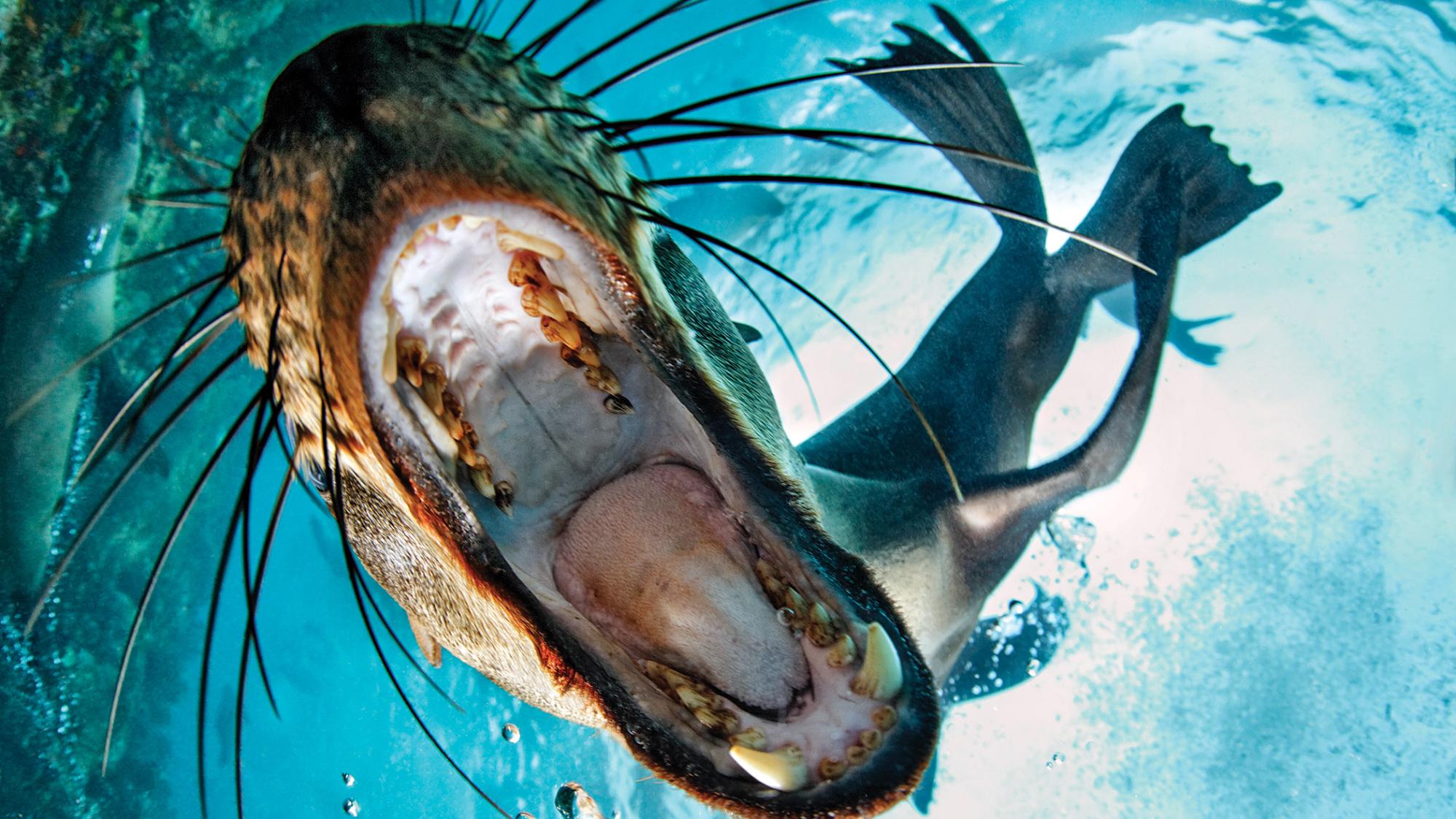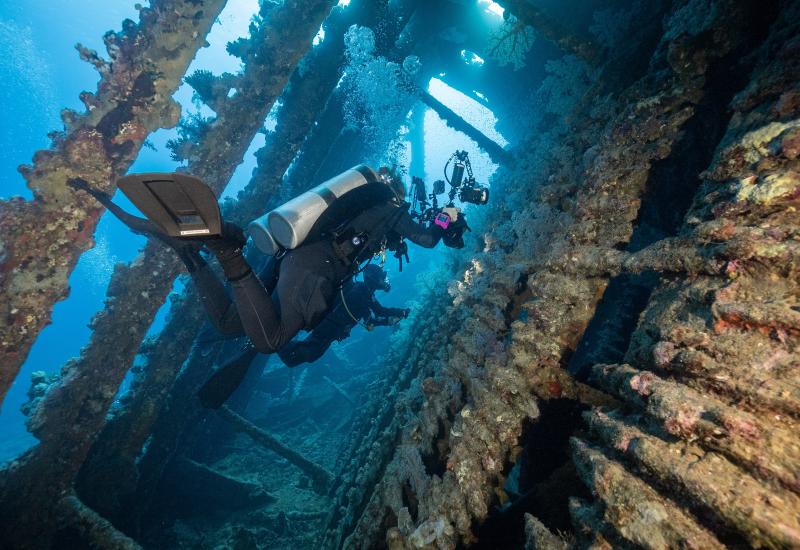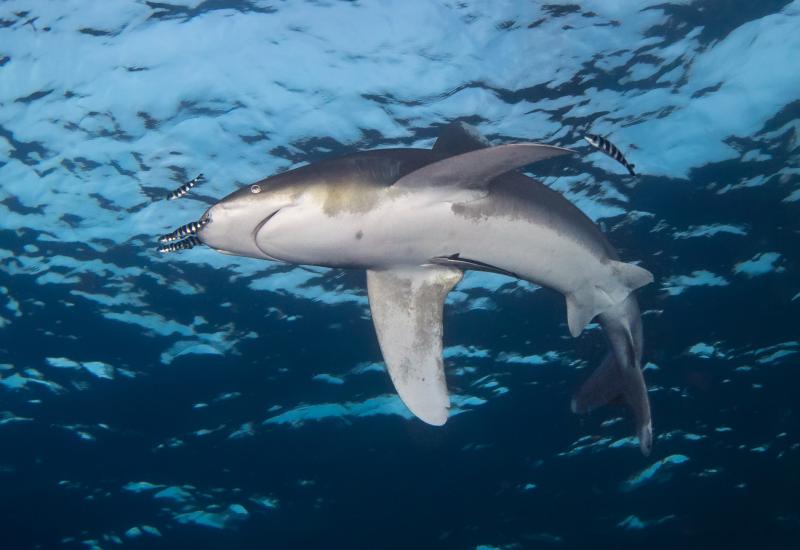Africa's Underwater Wonders
It’s a place that’s been beloved by underwater photographers for years — the images on the following pages will show you why. Now, with new liveaboards coming online and travel to once-remote regions becoming more commonplace for divers, increasing numbers of the rest of us are beginning to follow in their wake, discovering the majesty and magic of a continent where big animals still rule. From tried-and-true destinations such as South Africa to the rustic, unvarnished gems of Mozambique to diver favorites including the wrecks and reefs of the Red Sea, there’s so much to explore.
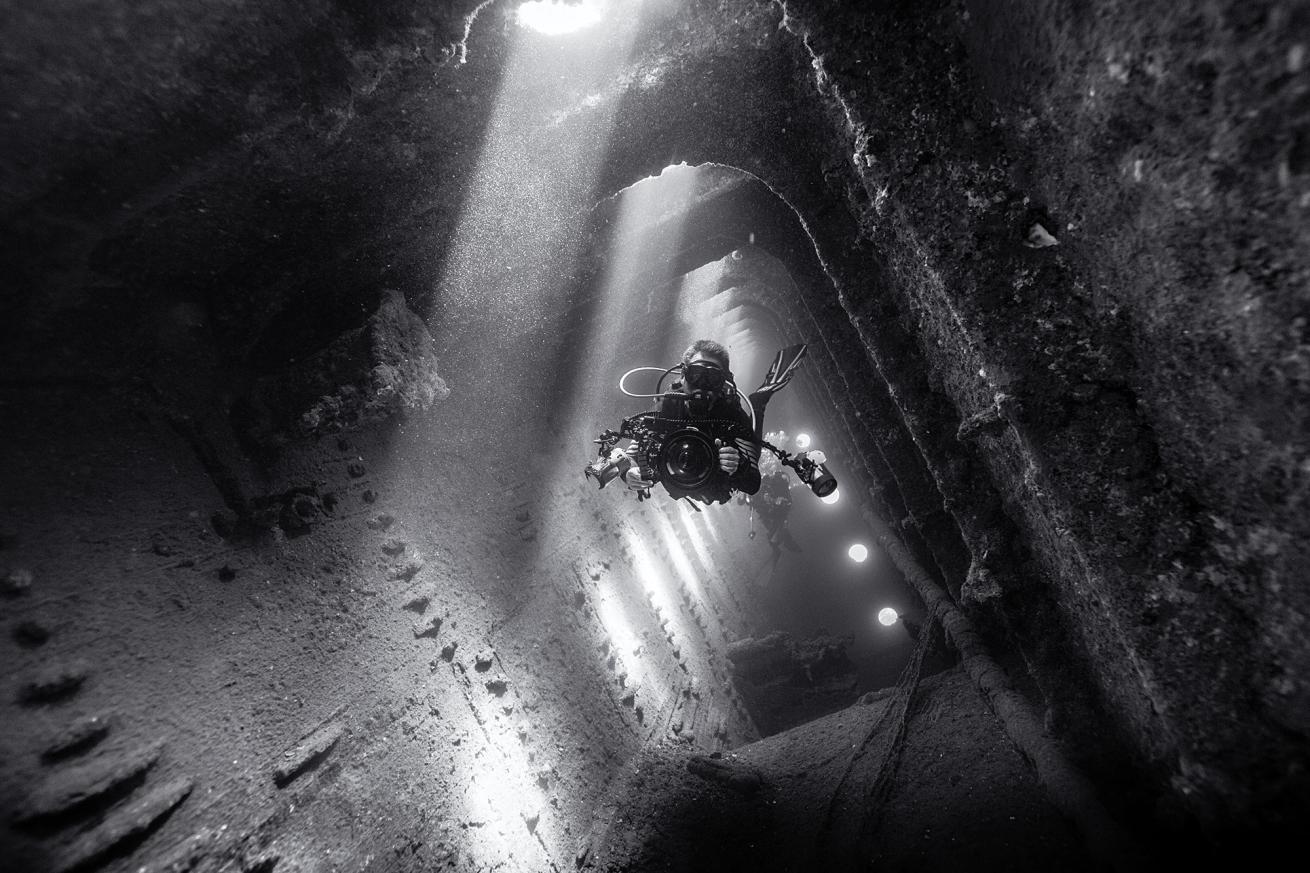
Amar GuillenA diver swims through Umbria, off Sudan.
Sudan is not well-known to scuba divers, but it offers a chance to dive the Red Sea as we knew it in the early 1990s, boasting large fields of multicolored corals in perfect condition. Our trip’s purpose was to photograph one of the most beautiful shipwrecks in the world: Umbria. Almost intact, it lies about 90 feet deep, sheltered from currents and tides in the heart of Wingate Reef, just outside Port Sudan. A true underwater museum, the fame of this wreck comes from its untouched cargo, which can still be appreciated today as you easily enter its corridors and holds, which are full of Fiat Lunga cars, bags of cement, bombs, shells, detonators, various spare parts, spools of wires, tires — and bottles of Italian wine! —Amar Guillen
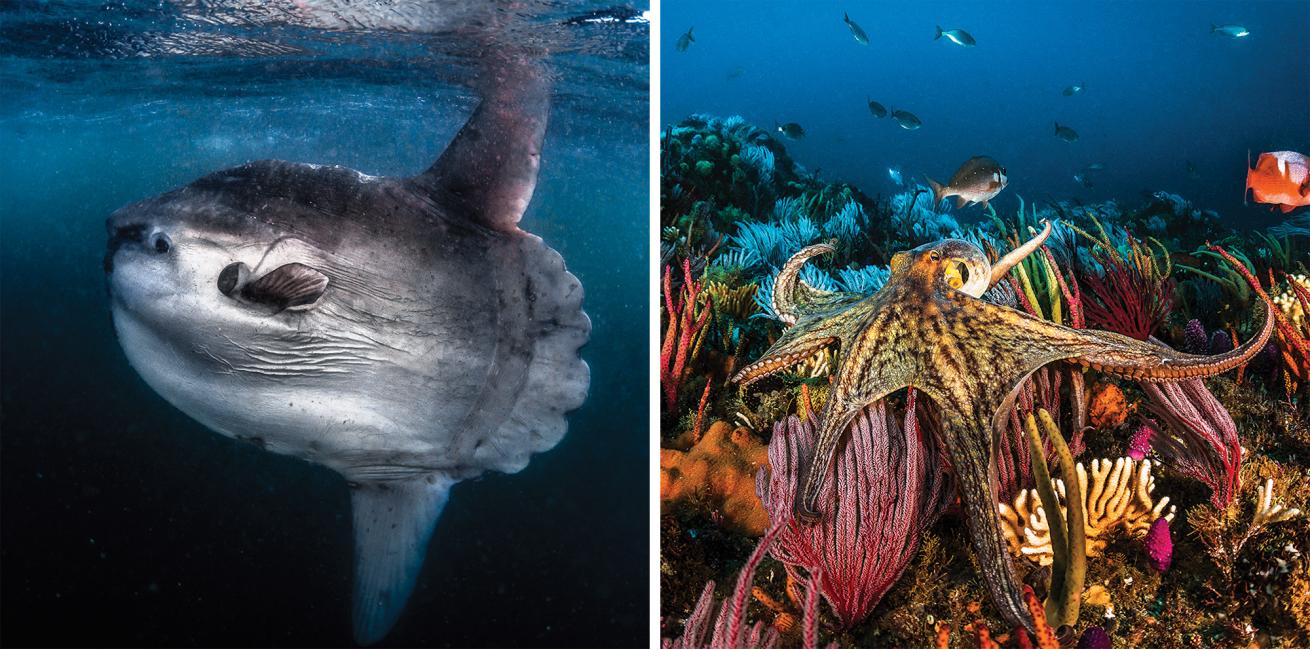
Greg LecoeurA sunfish (left), or mola mola, off Port Elizabeth, South Africa; and an octopus at Algoa Bay, South Africa.
Port Elizabeth in South Africa is a surprising dive destination. Well-known for the Sardine Run, Algoa Bay boasts colorful dive sites with an abundance of life. Several miles offshore, seamounts attract big schools of fish, catsharks, sand tiger sharks, octopuses, eels and multiple reef fishes. Each part of the reef is also colonized by corals with colorful sea fans that make a spectacular scene. Evans Peak and Riy Banks are two dive sites where I like to explore with my camera. Port Elizabeth is also known as the capital of the bottlenose dolphin, but my favorite encounter in this bay is with schools of penguins chasing baitfish. —Greg Lecoeur
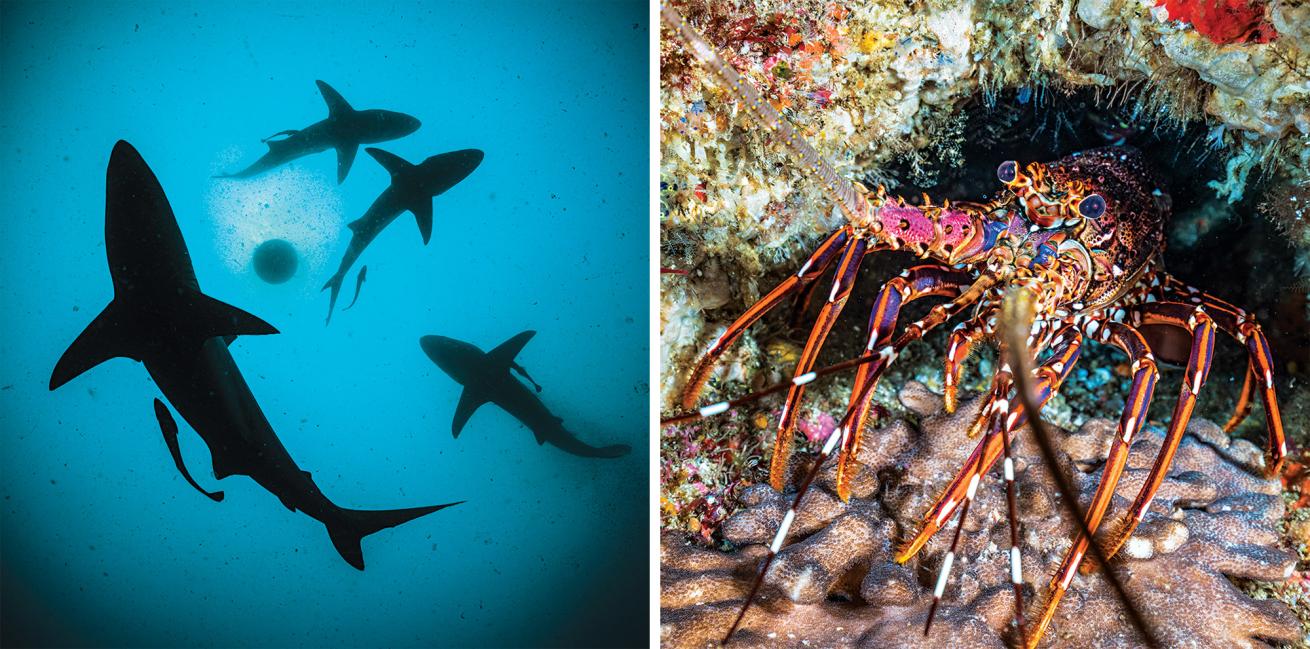
Uli KunzSharks circle bait at Protea Banks, where colorful coral and lobsters offer a different show.
Protea Banks — an Indian Ocean reef off the coast of Margate, South Africa — is well-known for its sharks. Depending on the season, divers can encounter tiger, sand tiger, blacktip and bull sharks, and occasionally large schools of hammerheads. There also are colorful sponges, seaweed, lobsters and rays living on or close to the seafloor, but they are not what you are looking for when you come to dive this offshore reef. I was curious to photograph the interactions between sharks and divers, and watch their behavior during baited dives. The visibility in the beginning of my journey was rather poor, but it turned out that I got better pictures during that time because the animals seemed to be more inquisitive. —Uli Kunz
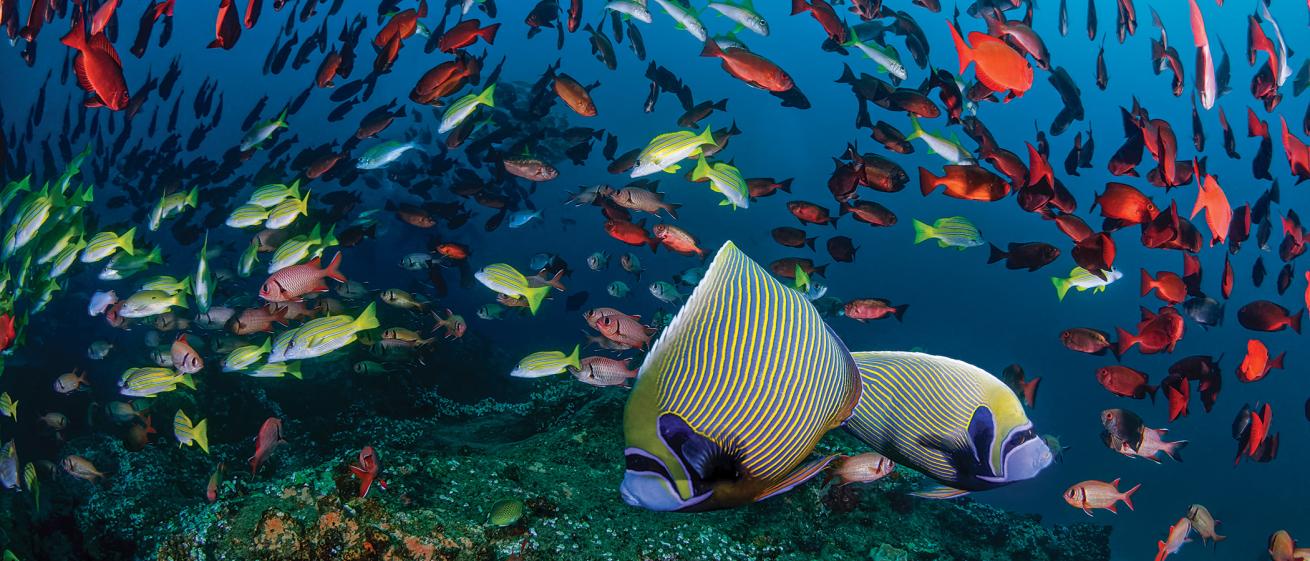
Geo CleoteFor sheer beauty, not much beats a pair of emperor angels off Ponta du Ouro in Mozambique.
Visions of sharing the water with megafauna — notably manta rays and whale sharks — drew me to Mozambique, but I was not so lucky during my stay. On the other hand, I gained an appreciation for Mozambique as a well-rounded dive destination outside of its reputation for attracting big animals. The abundant biodiversity in the Mozambique Channel — the body of water between mainland Africa and Madagascar — impressed, as I encountered huge schools of fish, shrimp of all colors, cuttlefish and potato grouper, just to name a few. —Gabriel Barathieu
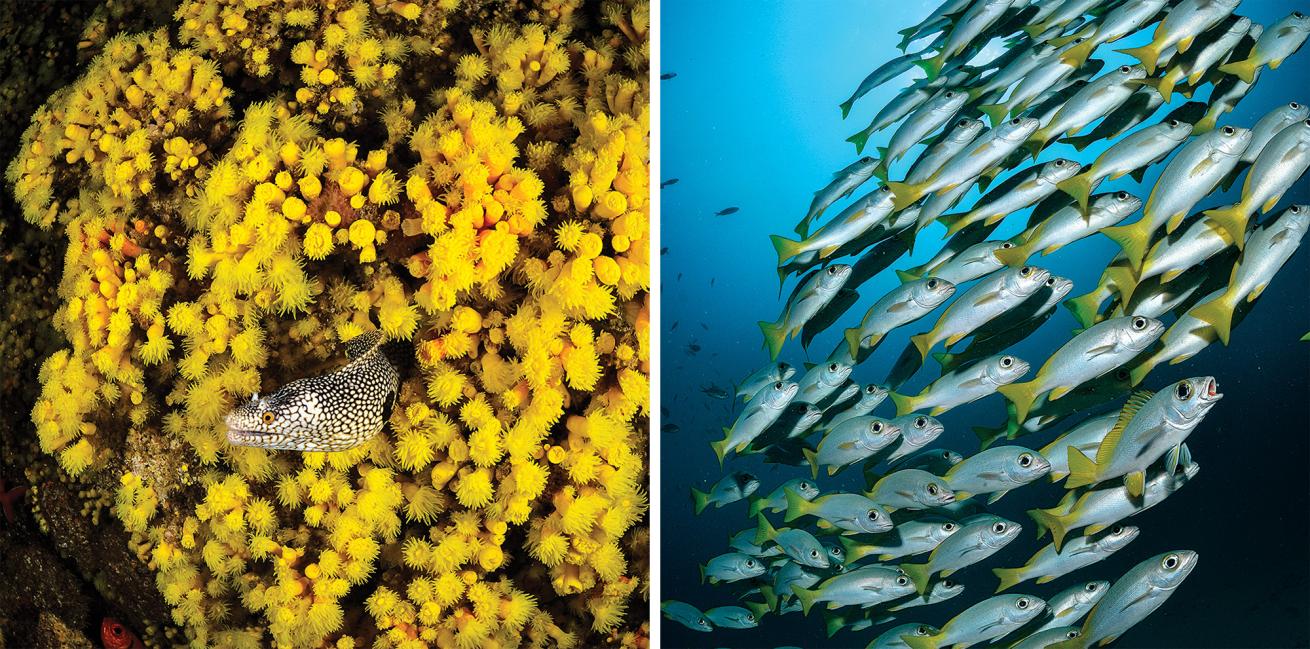
Damien MauricAn eel shelters in a colony of cup corals (left); guinea grunts mass at Chouclass Plateau.
Diving Sal Island in Cape Verde is a truly special and rewarding experience. Between colorful volcanic walls, cathedral-like caves and several well-preserved wrecks, you’ll be amazed not only by the interesting environments, but also by the wide variety of marine life — from huge shoals of fish to pelagics and rays in open water to the flying gurnards. In winter, humpback and occasionally sperm whales visit the island, while mantas, morays, turtles and a wide variety of sharks are year-round attractions. The most amazing dive spot of all is the Chouclass Plateau, a magnificent staircase carved in volcanic rock, one of my all-time favorite dives.
Although it is unknown to most divers, I rank it in the top five best dives in the Atlantic. —Damien Mauric
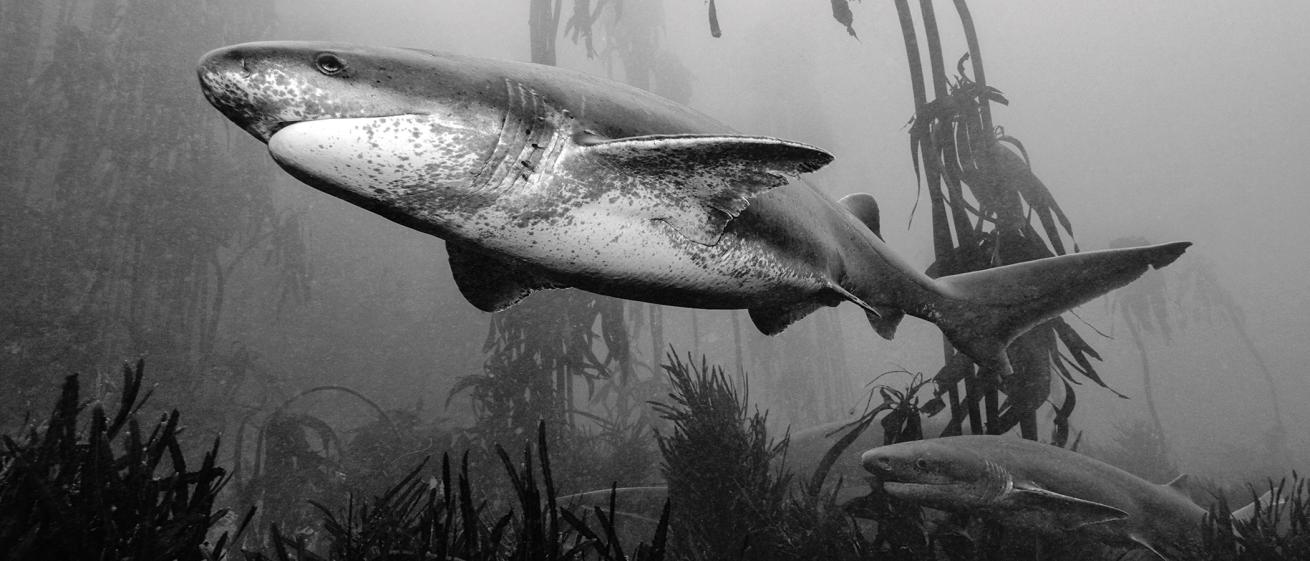
Tobias FriedrichEerie and ancient-seeming, broadnose sevengills lurk in bull kelp off Cape Town.
Cape Town, South Africa, is one of the world’s most underrated dive destinations, in my view. There are so many possibilities: Dive with sharks (blue, mako and cage diving with great whites), in kelp forests, with Cape fur seals, on wrecks, and so many other places in the Atlantic Ocean and False Bay. Among the most noteworthy encounters off Cape Town are the broadnose sevengill sharks that cruise the kelp forests (most sharks are five-gilled). These sharks, which seem little changed since ancient times, can grow up to nearly 10 feet in length, which makes the dive especially interesting. —Tobias Friedrich
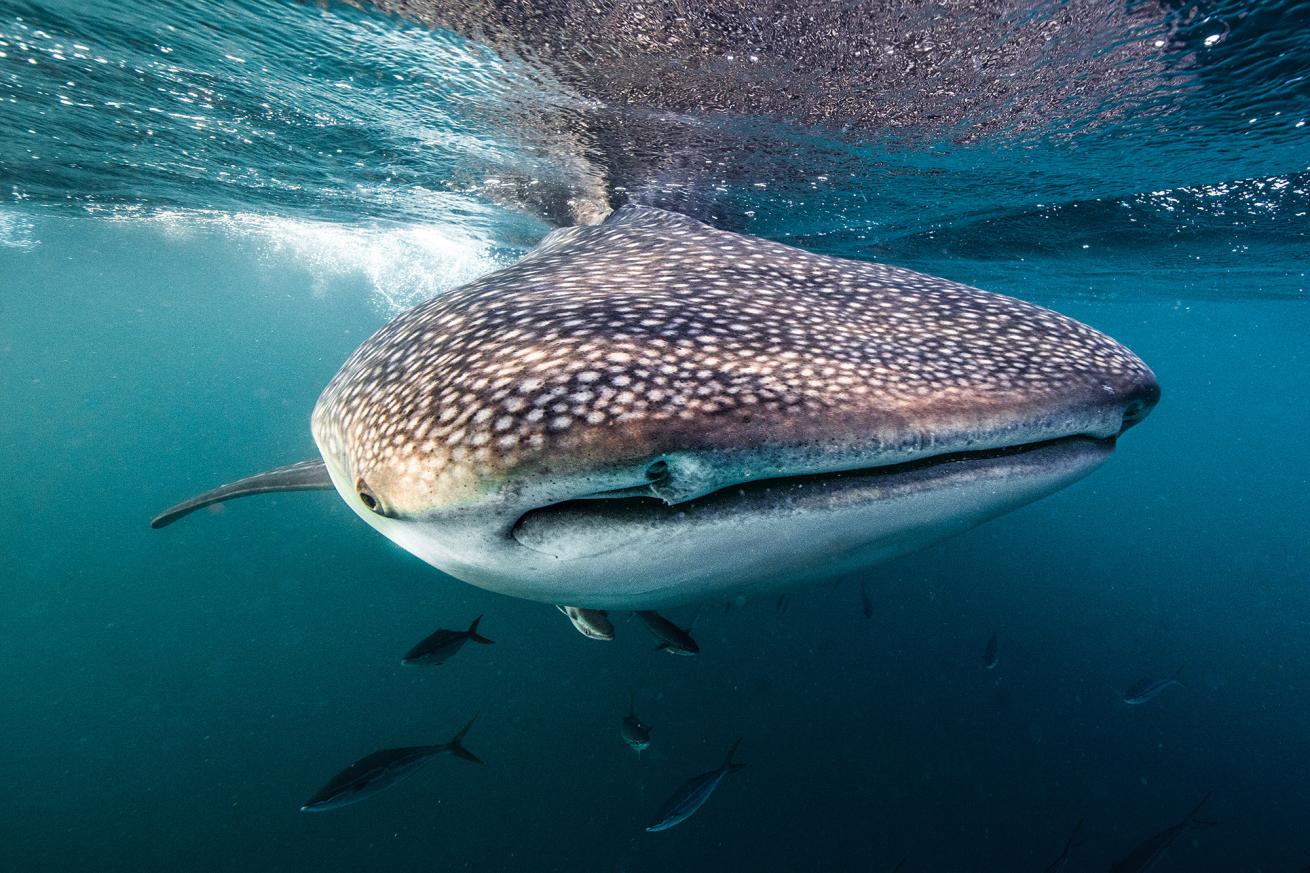
Simone CaprodossiA juvenile whale shark cruises off Djibouti’s Gulf of Tadjoura.
Djibouti is a tiny country where the main attraction is the yearly aggregation of juvenile whale sharks that inhabit the warm waters of the Gulf of Tadjoura from November until February. With only three active liveaboards, Djibouti allows for personal encounters with the whale sharks in beautiful early-morning and late-afternoon light. Divers also can explore stunning pristine hard-coral reefs teeming with fish life, and have the unique experience of diving through the crevasse known as “The Crack,” between the Asian and African tectonic plates, where you can stretch out your arms at about 100 feet down and touch two continents at once. —Simone Caprodossi
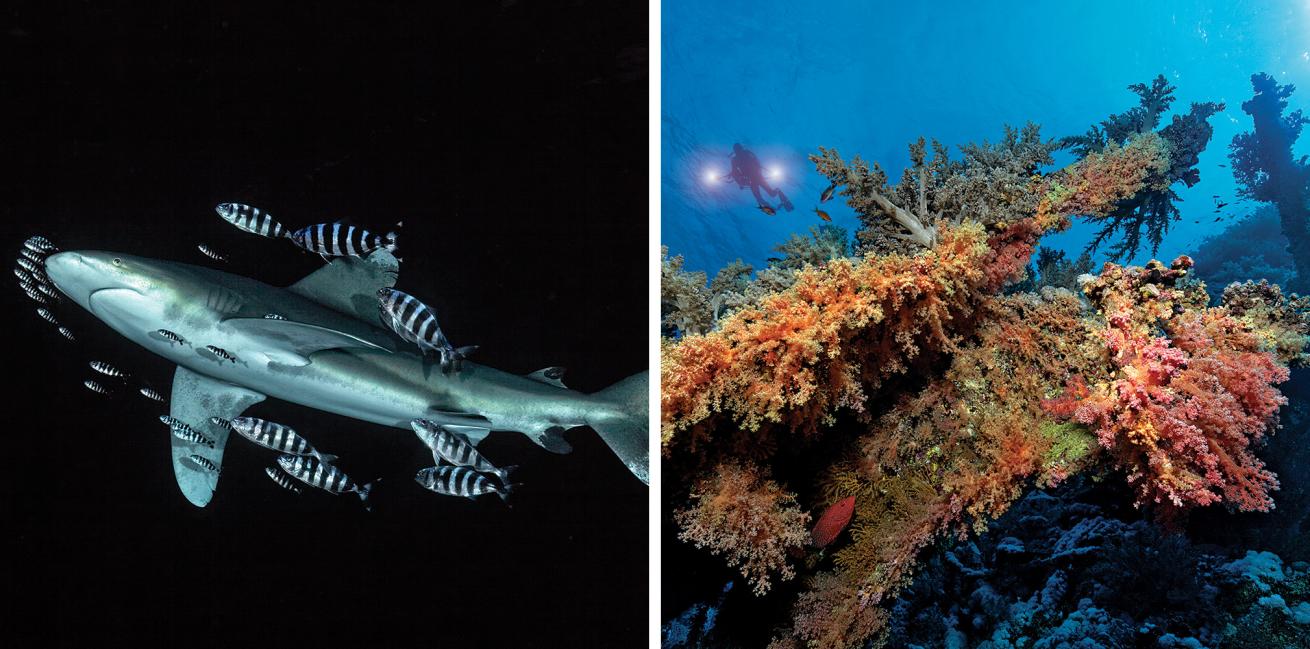
Tobias FriedrichOceanic whitetips (left) are the stars of the show at the Red Sea’s Big Brother Island; the coral-covered wreck Numidia lies nearby.
Egypt is a top destination for photography because it’s easy to reach from Europe and the United States, the weather is reliable, and conditions — especially visibility on the outer reefs — are always good. The Brothers Islands is one of the best dive sites in the Red Sea; the liveaboards that go there are excellent and a great value for the price. Two of the main attractions there are the wrecks Numidia and Aida, which are beautifully covered in soft corals and offer a lot to explore. Another highlight is the chance to spot oceanic whitetip sharks that often can be seen underneath the liveaboards and come very close to divers. —Tobias Friedrich
Topside Adventure
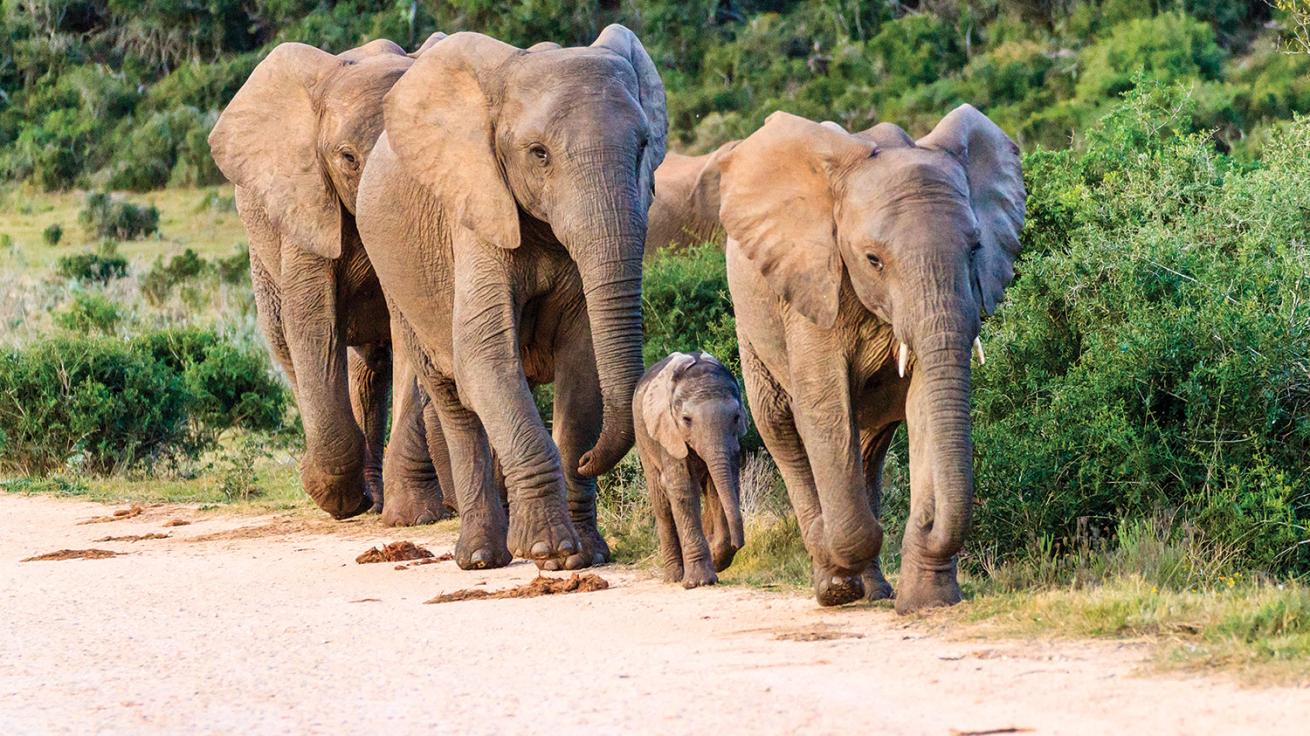
iStock/elleonCaption needed
Big-Five Safari
Soak in the majesty of South Africa on a safari. You can make the trek to Kruger National Park in the northeastern reach of the country, or opt for a private game reserve, such as Kwandwe or Shamwari. But perhaps the best option is to visit Addo Elephant National Park, a short drive from Port Elizabeth. The options are vast, but the goal is the same at each reserve: to experience Africa’s wild beauty. At Addo, there are about 600 elephants, more than 400 species of birds, and all of Africa’s big five: lions, elephants, leopards, rhinos and buffalo.
Oribi Gorge Nature Reserve
Jaw-dropping views abound along the self-guided hiking trails of South Africa’s Oribi Gorge, which plummets to 1,300 feet and stretches 3 miles wide. You can pack a picnic, zip-line across a section of the gorge, or just enjoy the wildlife as you explore. Here, about an hour drive from Margate, bushbucks are common and hundreds of bird species can be spotted.
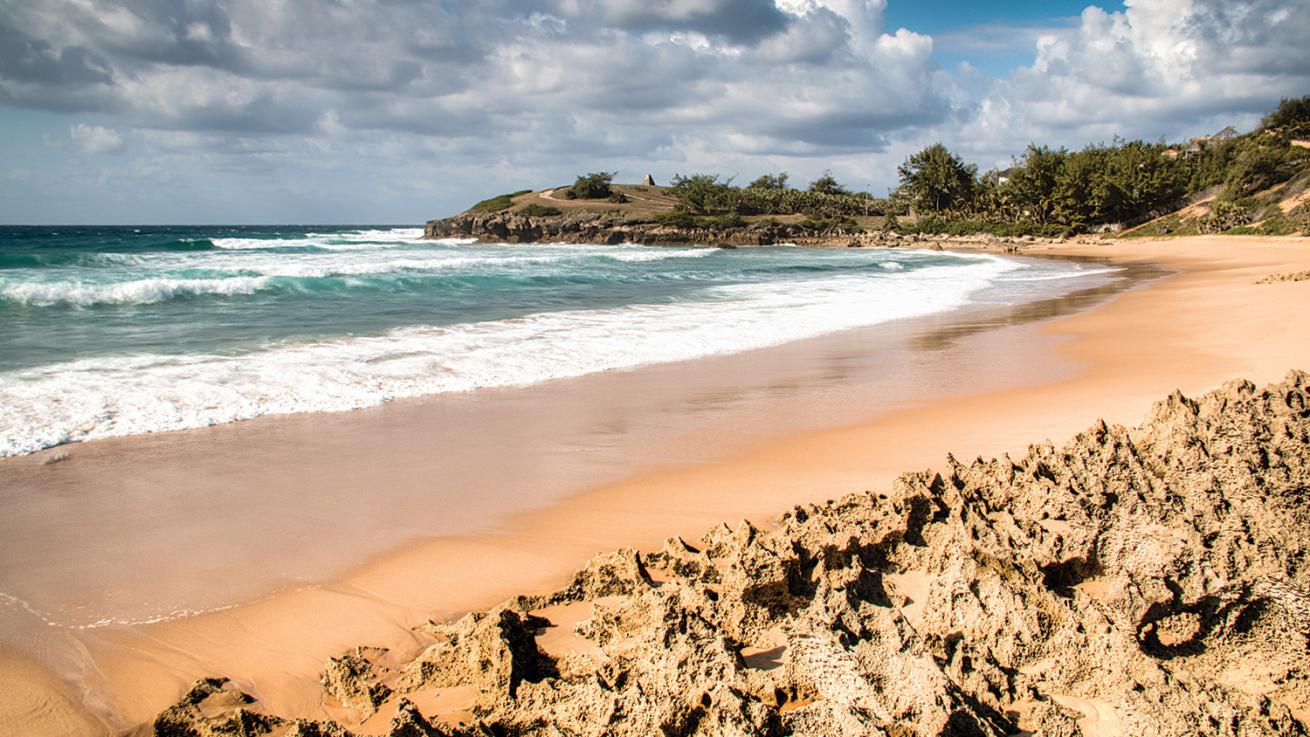
iStock/nicolasdecorteCaption needed
Tofo Beach
It might be impossible to resist the beautiful water off Tofo, Mozambique. So why try? Grab a mask and snorkel to check out the nearshore ecosystem or rent a surfboard from a local shop to catch a wave at Tofinho Point.
Boulders Beach
Watch African penguins scurry about giant rock boulders at this beach situated just outside Simon’s Town, South Africa. About an hour’s drive from Cape Town en route to Cape Point, this beach is home to around 3,000 of the native penguins.
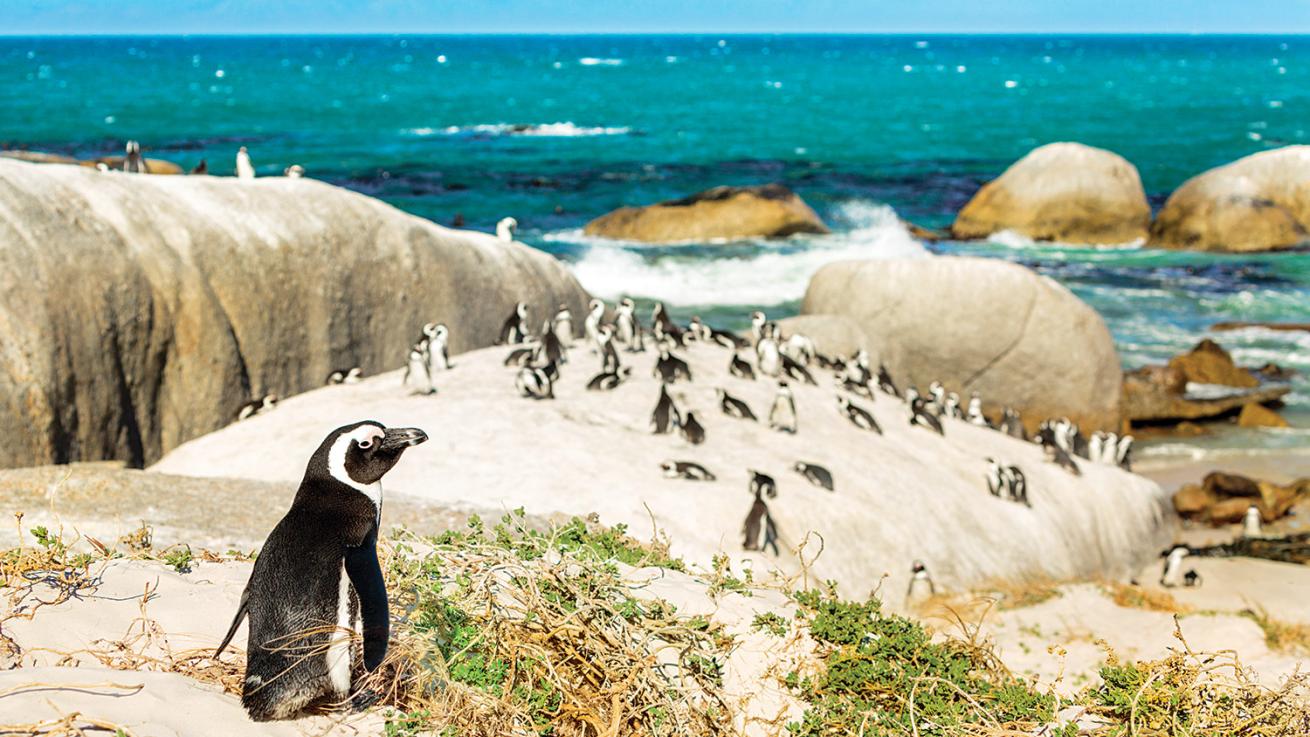
iStock/nicolasdecorteCaption needed
Wine Country
If you are making a stopover in Cape Town, it’s easy to spend an afternoon enjoying a wine tasting or picnic in one of the nine wine regions that are within an hour’s drive. The Stellenbosch wine route is one of the most popular and boasts around 200 wine farms. The scenery is breathtaking, and the wines diverse.
Lac Assal
Situated at 500 feet below sea level, this crater lake in Djibouti is the lowest point in Africa and a natural marvel. It’s even more saline than the Dead Sea, with an average of 34.8 percent salinity. The visual contrast alone is staggering, with a ring of salt bordering the aqua water and volcanic peaks on the horizon.
Pyramids
Take the extra days to travel from Red Sea resort towns to the outskirts of Cairo, where you’ll soak in the ancient wonder of the Great Pyramids of Giza, among the most famous structures in world history.

